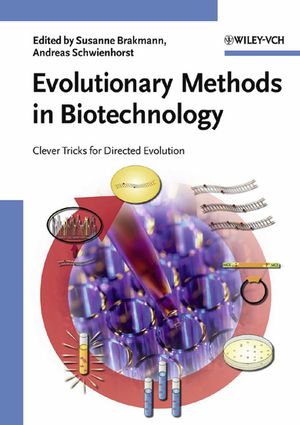Evolutionary Methods in Biotechnology: Clever Tricks for Directed EvolutionISBN: 978-3-527-30799-9
Hardcover
227 pages
July 2004
 |
||||||
Miniturization and high throughput assay technology have brought the power of molecular evolution to the bioscience laboratory. Applied wisely, the evolutionary approach can quickly yield the desired result even where other methods have failed.
From library generation by random or directed mutagenesis to screening and selection techniques -- the crucial steps for successful evolutionary biotechnology are described in detail in this practical guide that also includes valuable troubleshooting hints on frequently encountered problems.
Modern methods for the surface display of peptides and proteins, selective enrichment of nucleic acid aptamers and high-throughput screening of industrial biocatalysts are explained, and computer-based methods for in silico protein and RNA engineering are described as an alternative to in vitro approaches. A special section covers the patenting regulations with regard to biotechnological innovations derived from directed evolution.
As an added bonus, a CD-ROM is included that contains software tools for library design, selection of mutagenesis positions, and various predictive algorithms.
In short, this practice oriented handbook is an indispensable tool for every scientist working in this interdisciplinary research area.
From library generation by random or directed mutagenesis to screening and selection techniques -- the crucial steps for successful evolutionary biotechnology are described in detail in this practical guide that also includes valuable troubleshooting hints on frequently encountered problems.
Modern methods for the surface display of peptides and proteins, selective enrichment of nucleic acid aptamers and high-throughput screening of industrial biocatalysts are explained, and computer-based methods for in silico protein and RNA engineering are described as an alternative to in vitro approaches. A special section covers the patenting regulations with regard to biotechnological innovations derived from directed evolution.
As an added bonus, a CD-ROM is included that contains software tools for library design, selection of mutagenesis positions, and various predictive algorithms.
In short, this practice oriented handbook is an indispensable tool for every scientist working in this interdisciplinary research area.



